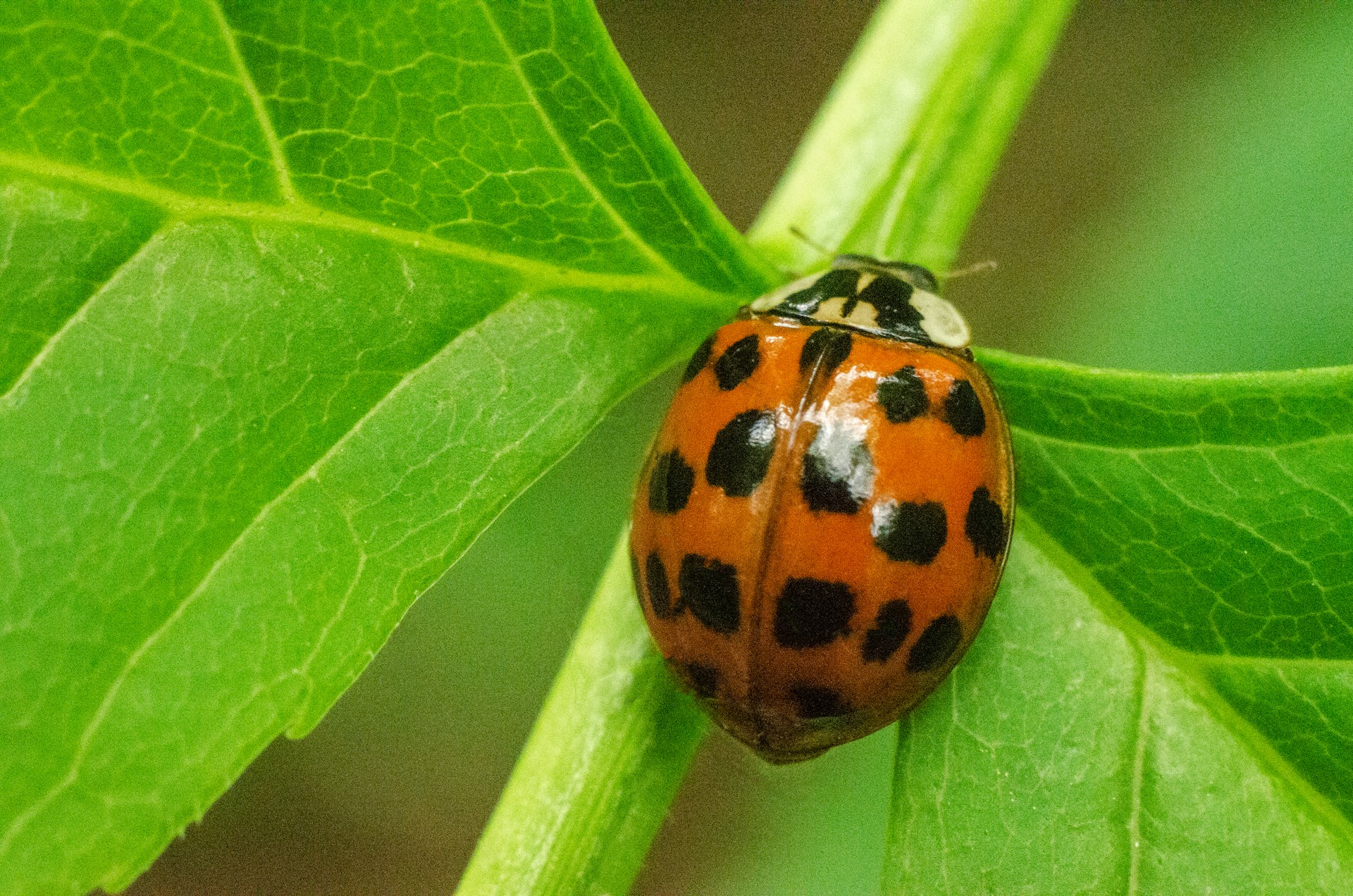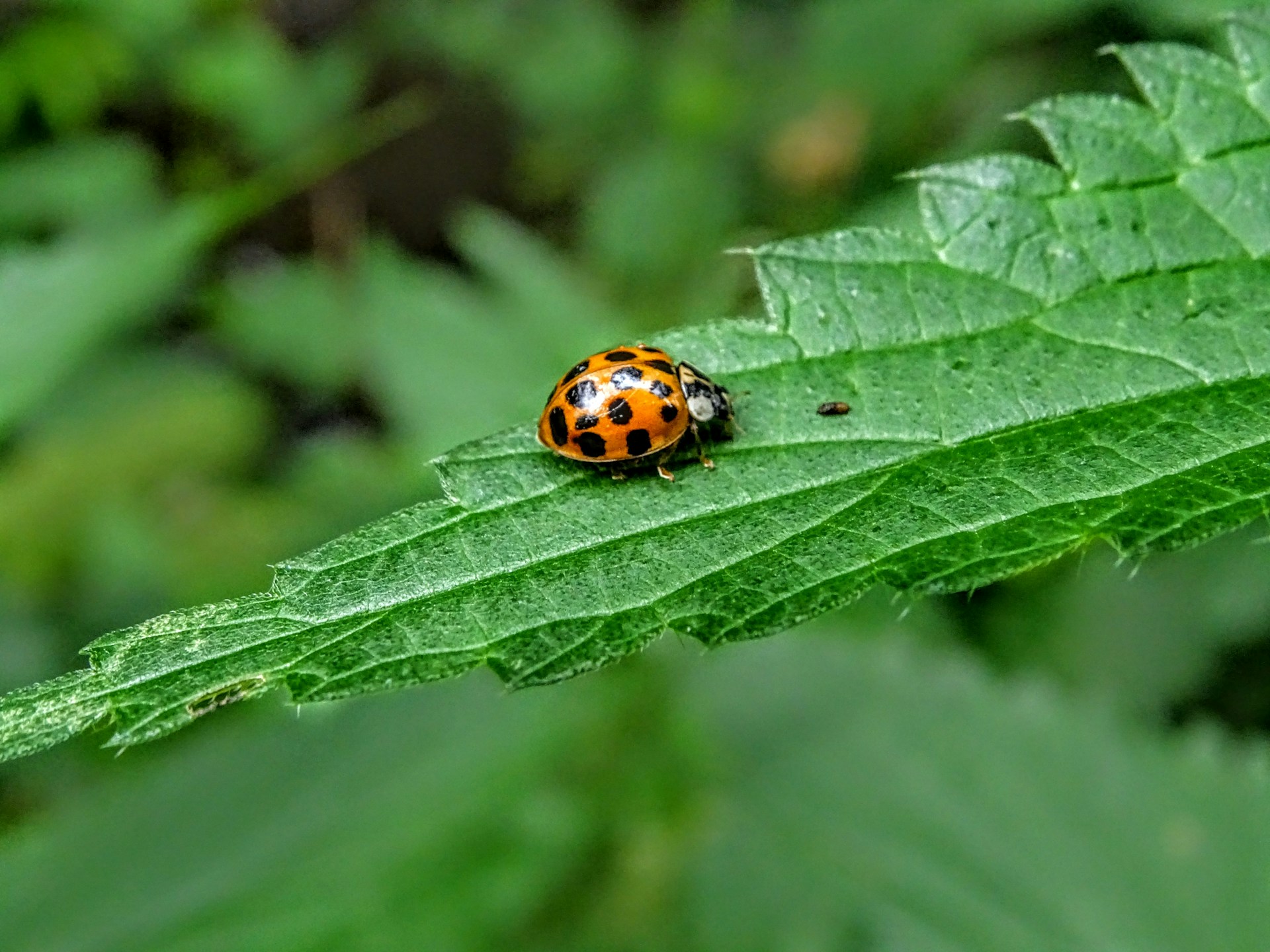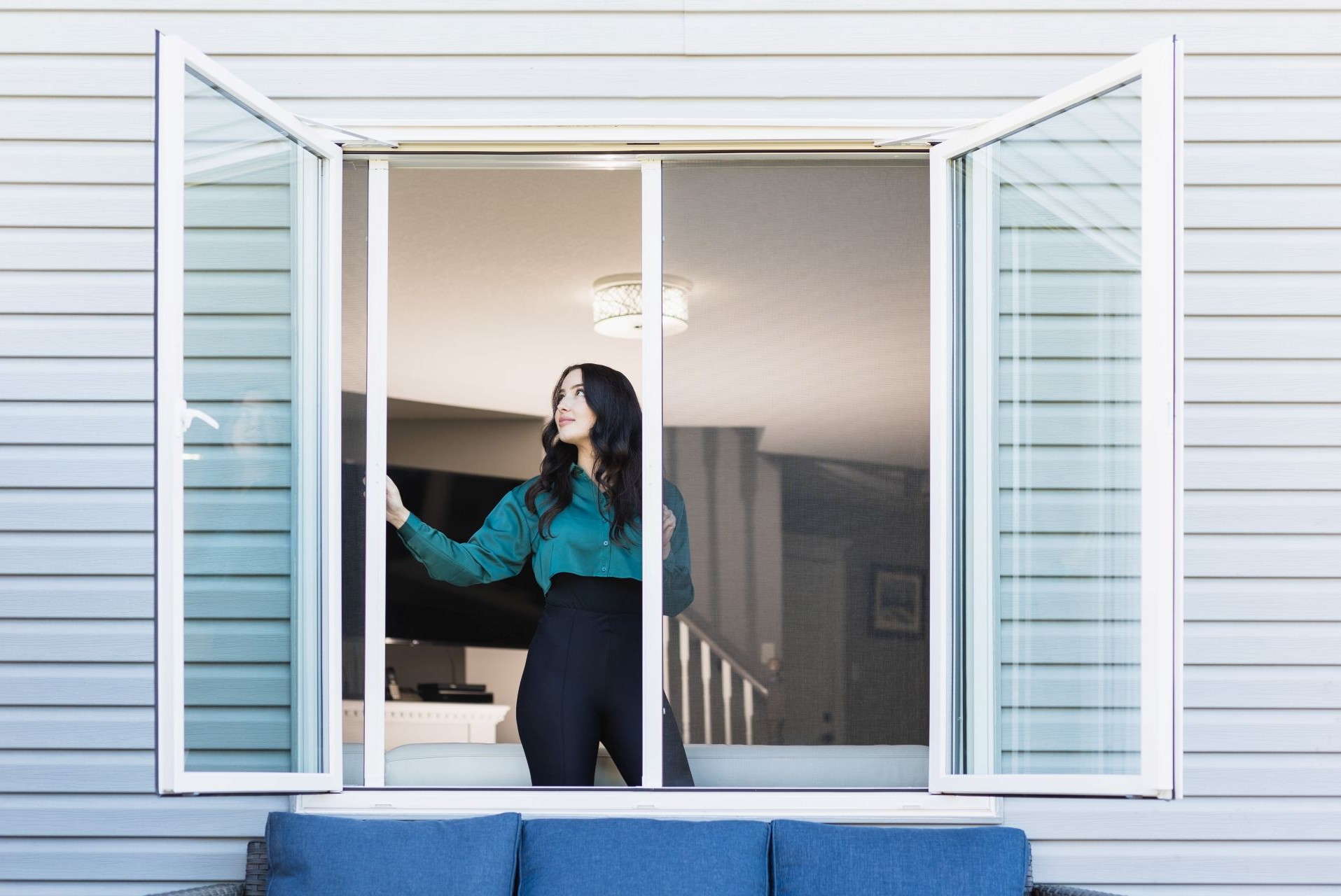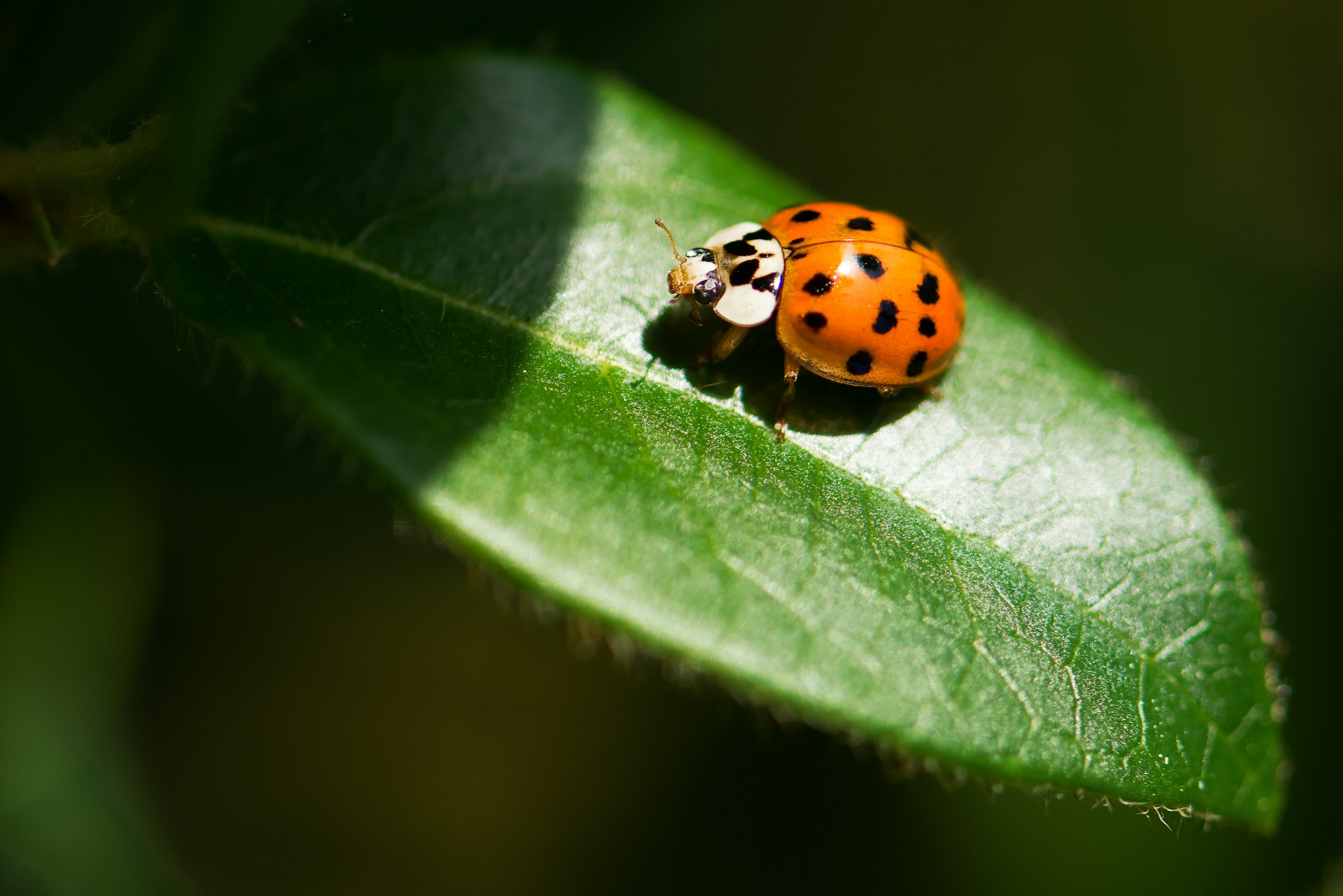
Window Treatment & Styles
How to Get Rid of Asian Lady Beetles: 6 Methods that Work!
Asian lady beetles may look quite adorable at first... Harmless ladybugs, aren't they? However, they are actually considered invasive pests and can quickly turn your cozy home into a winter hideaway. They sneak in through the smallest cracks, stain your walls with yellow secretions, and even bite you while you're sleeping (although they do not transmit diseases)! But rest assured–you can take back control of your space with a few strategic steps and smart home upgrades!
Therefore, if you want to learn some tips and tricks on how to get rid of Asian lady beetles, read on!
Key Takeaways
- Asian lady beetles are larger than native ladybugs and often feature a distinct white “M” on their heads. Some are even solid black with red markings.
- These beetles don’t reproduce inside but will gather in huge numbers in attics, wall voids, and window frames. They release foul-smelling, staining liquids when disturbed, so gentle removal is key.
- Vacuuming (never squishing), citrus or clove-based repellents, light traps, and diatomaceous earth are all safe, effective ways to remove and discourage beetles without harsh chemicals.
- Cracks, damaged bug screens, and poor seals are major entry points. Therefore, seal up your home, inspect bug screens, and upgrade windows and doors to reduce the risk of infestation.
Asian Lady Beetles: Description and Behavior

Like other lady beetles, Asian lady beetles have a bright red or orange coloration adorned with black spots on their wing covers. However, some Asian lady beetles may be uniformly black and have two or four red markings. It's important to correctly identify them because native ladybugs are not invasive like Asian lady beetles are.
One thing that can help you distinguish adult Asian lady beetles from other ladybugs is the M-shaped, white marking on the top of their heads. Another distinguishing feature of this species is their large size: 5.5-8.5 mm.
Asian lady beetle eggs are yellow and oval. They're usually laid in clusters on the undersides of leaves. The larvae are orange and black, look like tiny alligators, and feed primarily on aphids. It takes approximately one month for an egg to mature, and there are multiple generations per year. These beetles live up to three years. Given these details, Asian lady beetles can indeed become a nuisance pest and sometimes difficult to get rid of.
Although they have few natural enemies, when disturbed, these beetles secrete a yellowish staining fluid from their leg joints, which has an unpleasant odor and can stain surfaces. This defense mechanism can also help you distinguish them from other similar insects.
What You Need to Know About Their Infestation in Buildings
Like boxelder bugs, Asian lady beetles enter homes in autumn. When temperatures drop, adult beetles leave their summer feeding sides and approach homes and buildings where they can overwinter. You may see swarms of beetles flying towards houses on a warm day following a period of cooler weather.
Sunnier, southwest sides of a building attract beetles. Asian lady beetles are also attracted to homes with a light background or contrasting light-dark features such as white windows with a dark trim. Houses located close to woods and fields are at a higher risk of infestation.
Asian lady beetles hide in crevices, wall cavities, attics, and window and door frame cracks. When springtime comes, Asian lady beetles become active again and may be seen indoors while they're attempting to escape to the outdoors.
Here are some other details you need to know about them:
- Asian lady beetles do not pose any dangers to humans or pets. They do bite (more precisely, pinch) with their chewing mouthparts but they do not carry diseases. In rare cases, their bites can cause allergic reactions, including eye irritation and asthma. Because of this, it's recommended to avoid touching your eyes after handling Asian lady beetles without washing your hands.
- They emit an unpleasant odor and can stain surfaces with yellowish secretions.
- Asian lady beetles do not cause damage to wood, food, or clothing. On the contrary, they are often considered beneficial insects that feed on agricultural pests and plant pests like aphids, scale insects, and other insects.
- Asian lady beetles do not reproduce indoors.
- If you notice Asian lady beetles, they may be the same from the previous fall. These bugs are known to return to their overwintering sites.
Quick Methods to Remove Asian Lady Beetles Indoors

As mentioned earlier, Asian lady beetles don't cause structural damage and aren't dangerous insects. However, given the fact that they can gather in really large groups, they can become nuisance pests whose markings can stain walls and not only. Occasionally, they may eat fall-ripening fruit like apples or grapes.
So, how can you get rid of Asian lady beetles? Here are some methods you can try!
1. Use a Vacuum Cleaner
Avoid squishing or brushing Asian lady beetles off surfaces. They will leave that beetle stain you'll have to remove later. Therefore, it's best to use a vacuum if you notice any Asian lady beetles (they can become more active during warm winter days).
A shop vac is recommended for its strong suction and capacity to handle large quantities of beetles. After vacuuming, tightly seal and discard the vacuum bag to prevent re-entry.
To avoid using too many vacuum bags, you can use a nylon stocking to trap the beetles. Just insert it into the extension hose and secure it with a rubber band. Then, you can simply remove the stocking.
2. Use Natural Repellents
These multicolored Asian lady beetles are quite charming, aren't they? We totally understand if you don't want to kill them! You can, instead, use some natural repellents, which may keep them at bay.
Citrus oil, for example, could be an effective repellent against these bugs. You can mix some with water and spray the insects or the crevices they enter through.
You can also try cloves or bay leaves–Asian lady beetles really can't stand these! You can place them around windows or in other infested areas.
Other natural deterrents you can try include peppermint oil and camphor or tea tree oil.
However, keep in mind that these may not always be effective, and the Asian lady beetles can always come back (sometimes in larger numbers!).
3. Get Some Light Traps
Light traps have artificial lighting that attracts insects and a glue card that traps them in. These can be incredibly effective, especially in attics or other enclosed spaces.
It's important to ensure that the light in the trap is the only light in the room, so the lady beetles are attracted to it. Furthermore, check the traps regularly and replace them when needed.
You can also DIY a light trap. All you have to do is pour some water into an aluminum pan, mix it with soap, and place a light source over it. The light will attract the beetles, and they'll eventually drown.
3. Use Diatomaceous Earth
Diatomaceous earth is a natural substance that can help you get rid of Asian lady beetles and other types of bugs. It basically dehydrates insects and causes them to die.
Therefore, you can spread some diatomaceous earth around your home, as well as on common entry points, such as around windows and door frames.
Diatomaceous earth is generally considered safe for humans and pets. However, it's important to avoid inhaling it. Because of this, make sure to wear a face mask while spreading it (ideally when it's not windy) and keep pets and children away.
4. Seal Your Home
Once you get rid of those Asian lady beetles that have already taken residence in your house, it's time to seal all the entry points to prevent others from entering your sanctuary. And don't underestimate them–they can fit into the tiniest cracks!
- Pay special attention to cracks around windows and doors, as these are the most common entry points for Asian lady beetles.
- Use silicone caulk and weatherstripping to seal doors and windows.
- Use copper mesh for larger holes.
- Seal utility entry points (e.g., attic vents, plumbing pipes).
- Seal areas where utility wires enter the building.
- Install door sweeps on exterior entry doors.
- Install fine-mesh vent screens in attics and chimneys.
If your window or door frames are warped and cracked, it may be worth considering replacing them because you may not be able to repair them anymore, and those beetles will keep using them as entry points. Plus, if you choose high-quality, well-insulated windows and doors, you won't only get rid of the bugs that enter through the cracks around them! You'll also improve your home's energy efficiency and save money on energy bills.
If you think this is the best option for your house, you can get in touch with Magic to learn more about our windows and why they're the best for Canadian homes!
5. Repair or Replace Your Bug Screens

Even the smallest crack in your window and door screens can serve as an invitation for Asian lady beetles. Therefore, inspect them thoroughly during late summer, before Asian ladybugs start seeking warmth and shelter. If you find some cracks, repair them as soon as possible. If you cannot repair them, it's best to replace the bug screens altogether.
You could get Magic screens, for example, which are favored by Canadian homeowners due to their innovative technology. Magic screens are fully retractable. This means that when not in use, they remain hidden within a cartridge attached to the window frame. When you want to keep your window open and prevent bugs from entering through it, you simply have to pull the screen out of its cartridge. It will glide seamlessly along the window frame and cover the entire opening, leaving no gaps behind!
We almost forgot the most important detail–our bug screens are covered by our 40-year warranty, so no more bugs for the next (almost!) half of a century!
6. Professional Help for Severe Infestations
Professional pest control may be necessary for severe Asian lady beetle infestations. If DIY methods are insufficient or problems recur, seek expert help. Professionals can effectively locate and treat the infestation source. It's best to avoid handling chemical products yourself.
Asian Lady Beetle Removal and Prevention: Seasonal Checklist

- Late Summer (August–September)
- Inspect and repair screens.
- Begin sealing cracks and gaps.
- Apply repellents and diatomaceous earth at common entry points.
- Fall (early October–November)
- Install traps in attics or dark spaces.
- Monitor the sunnier (southwest) side of the home for beetle activity.
- Avoid opening windows without screens.
- Winter (December–February)
- Vacuum visible beetles; don’t squish.
- Monitor attics and wall voids for movement.
- Spring and early Summer
- Check for emerging beetles indoors and remove them.
- Reseal any new cracks that may have formed over winter.
- If they do not cause any damage, you can let these beetles live in your yard or garden. They are known to feed on species that cause damage to agricultural crops and gardens.
Health & Safety Tips
- Avoid touching your eyes after handling beetles.
- Wear gloves and a mask when applying powders or sprays.
- Do not allow children or pets to come into contact with beetles or deterrents.
- Consult a professional if you experience allergic reactions or asthma symptoms.
Keep the Bugs Out and the Comfort in–With Magic!
The best way to stop Asian lady beetles from entering your home? Stop giving them a way in! Magic's innovative windows, doors, and retractable bug screens are designed with airtight insulation, durable window frames that won't warp or crack, seamless sealing technology, and high-quality mesh that leaves no gaps for insects to exploit.
Plus, our solutions don't just block bugs–they boost your home's energy efficiency, comfort, and value! All backed by our industry-leading 40-year warranty!
Interested in a smarter, cleaner, bug-free home? Contact Magic today to learn more about our revolutionary products built specifically for Canadian homes!
Frequently Asked Questions
How do I get rid of Asian beetles permanently?
To get rid of Asian lady beetles permanently, seal all entry points around your home, use diatomaceous earth, light traps, or natural repellents, and install tightly fitted bug screens. Professional pest control services may be needed for severe infestations.
What is the best repellent for Asian lady beetles?
Citrus oil and peppermint oil are sometimes used as repellents for Asian lady beetles. You can also try cloves or bay leaves.
What causes Asian lady beetle infestation?
Asian lady beetles invade homes in fall when they seek a warm and protected site. They are often found in buildings with sunny, light-colored exteriors.
What smells do Asian lady beetles hate?
Asian lady beetles dislike strong scents like citrus, peppermint, cloves, bay leaves, and citronella.
When should I seek professional help for an infestation?
You should seek professional pest-proofing services for an infestation if the number of pests exceeds manageable levels or if you are experiencing recurring infestations. Addressing the issue promptly can prevent further damage and health risks.